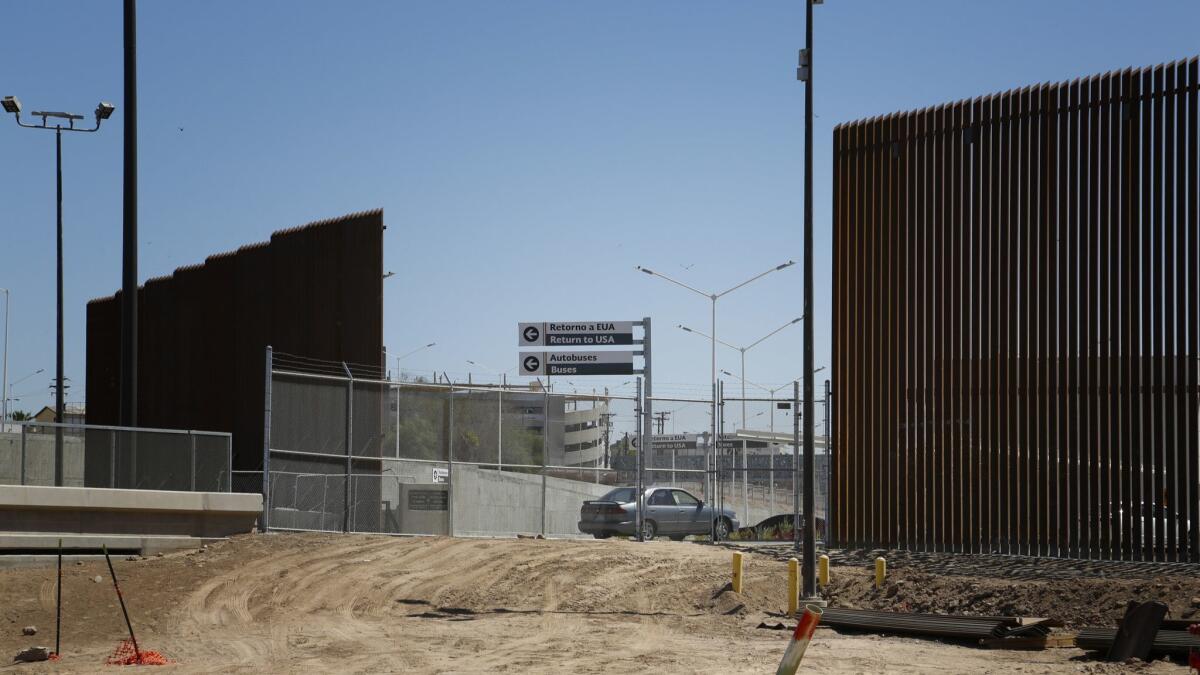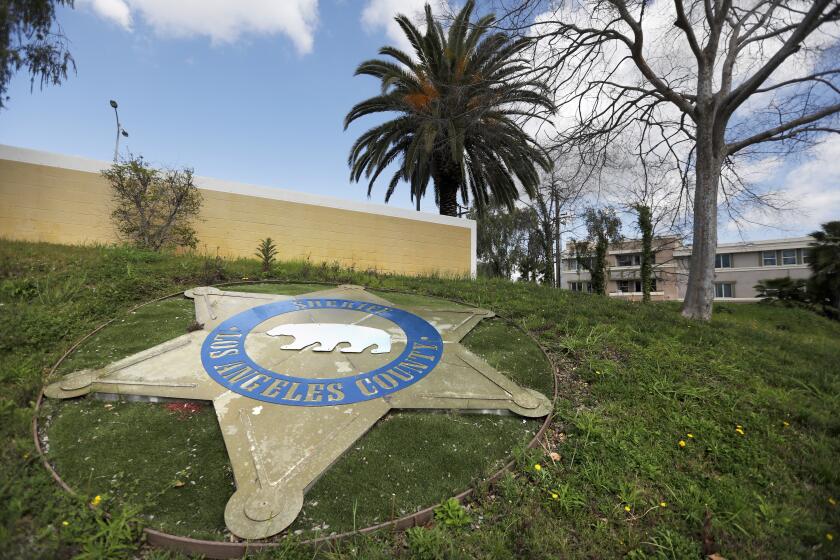Border fence replacement hailed by Trump is completed in Calexico

Construction workers last week put up the final panel of a new border barrier in Calexico, Calif., a project touted by President Trump as the first part of his promised wall between Mexico and the U.S.
Almost two years into Trump’s presidency, Congress has so far avoided funding a full-fledged border wall. The approximately $1.6 billion in funding that has been awarded to border construction has focused on replacement barrier projects with restrictions about the type of structures that could be built with the money.
That meant that the Trump administration couldn’t build barriers that resemble the wall prototypes that were erected last year in Otay Mesa.
Whether the Calexico barrier is actually part of Trump’s promised wall has been heavily debated since the project was announced in February.
The estimated $18-million project replaced just over two miles of a 1990s barrier made of steel Vietnam War-era military aircraft landing mats with 30-foot bollards — poles placed close together to restrict entry but allow people on either side to see through.
Department of Homeland Security officials previously called existing border barriers “fences,” but after construction began in Calexico, they began to refer to both old and new structures as part of a “border wall” and, more recently, a “border wall system.”
Gloria Chavez, chief of the El Centro sector of the U.S. Border Patrol, said the new Calexico barrier is “a solid first step in strengthening our border security posture.”
“The border wall will greatly enhance our agents’ ability to detect and arrest those entering the country illegally,” Chavez said, adding that she believes it will also have a positive effect on the surrounding border communities.
Planning for the barrier replacement project began in 2009, but funding and construction came under the Trump administration. The only characteristic the new structure shares with Trump’s border wall prototypes is its height. At 30 feet, it towers over older fencing in the El Centro sector, which at the highest rises to about 20 feet.
Six of the eight prototypes don’t fit one of the Border Patrol’s main criteria for new construction — being able to see through the barrier to better respond to crossing attempts and improve agent safety. According to a recent report from the Government Accountability Office, Customs and Border Protection also determined that all of the prototypes would present construction challenges.
Because the new Calexico barrier is see-through, some have said that it is a fence, not a wall.
The Calexico structure is one of several going up along the Southwest border this year. Workers recently completed 20 miles of border barrier in Santa Teresa, N.M., a project that began in April.
Construction crews are also working to replace 14 miles of landing-mat barrier along the San Diego-Tijuana border. According to Border Patrol Agent Tekae Michael, workers have completed about 6½ miles of that project, which began in June.
The new bollard barrier allows San Diego agents for the first time to see through to the Mexican side of the border, Michael said.
“It’s a big deal for us,” she said.
Border Patrol Agent Justin Castrejon said at least one person has already been injured and hospitalized after falling from the new, taller structure while trying to climb over it.
Environmental activists have raised objections to border barrier construction, saying it disrupts habitats and migration patterns of a variety of animals, including endangered species.
On Wednesday, the Department of Homeland Security announced that it would waive environmental impact assessment requirements for a construction project in the Rio Grande Valley sector in Texas, the sector that currently sees the highest number of illegal border crossings.
“The Rio Grande Valley is one of the most spectacular and biologically important landscapes in the country,” said Laiken Jordahl, borderlands campaigner for the Center for Biological Diversity. “Every acre is irreplaceable. We’ll do everything in our power to stop this destruction.”
The organization sued over similar waivers that DHS put in place for Calexico and San Diego construction. A federal judge sided with the Trump administration, and the Center for Biological Diversity is appealing that decision.
A tweet from the El Centro sector announcing the end of construction promised more border infrastructure improvements in 2019.
kate.morrissey@sduniontribune.com
Morrissey writes for the San Diego Union-Tribune.
More to Read
Start your day right
Sign up for Essential California for news, features and recommendations from the L.A. Times and beyond in your inbox six days a week.
You may occasionally receive promotional content from the Los Angeles Times.






